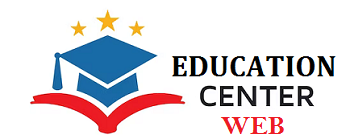The time of “What if the schools closed? Establishments in the United States and around the world have closed or are planning to close. Educators are being forced to act whether they are ready or not, and with the very real possibility of having to transition to remote learning, partially or fully, following the closures, and we all need to act quickly and thoughtfully.
learning environment, as expert teachers working in their classes with students they know and love. Yet this is the reality we face, and we cannot afford to be overwhelmed, nor to stand still. Rather, we should take stock of the expertise and resources available and try to mitigate any negative impact on students.
To do this work effectively, schools and districts need time to address critical long-term elements of professional learning, infrastructure, equitable access for students and families, about disabilities and learning styles, and more. However, these are complex issues that may take time to resolve, and many of us will need to focus on the most pressing needs and take the most appropriate action for the immediate future.
On the one hand, we must take into account the technological and pedagogical factors around what is already available, as well as the capacity and preparation of the staff. On the other hand, we need to think about the quality of this education and about the tools that could help ensure that education not only continues, but remains truly meaningful and effective. As the crisis continues to evolve, educators may feel inundated with advice and resources, but there are a few basic pedagogical principles that can help us all navigate this tumultuous and rapidly changing landscape, particularly if learning online is part of our plan for our students.
Meaningful work
Simple hands-on games and exercises are likely to play an important role in setting up an effective distance learning environment. However, if we are to ensure high-quality instruction, instructors will need to design tasks that require high-level thinking skills and are intentionally engaging for their learners. The circumstances of this sudden new and different way of learning will already be a challenge for many students. If the tasks don’t push them to use all parts of their brains with interesting, meaningful, topic-focused and engaging work, it will be even harder for students to succeed.
How this work is structured will determine whether students are properly supported. Part of the research concerning this pedagogy is the subject of massive recruitment on the Internet. If you’re interested, a great compilation we’ve found is this massive set of resources led by Dr. Alexandria Lockett of Spellman College.
Feedback is important
John Hattie’s work over the years has proven that commenting has a significant impact on student learning. Feedback is even more important if the teacher is not constantly interacting in person with their students, which means teachers will have to take extra steps to provide relevant and actionable feedback on their students’ work. Turnitin users benefit from a number of different mechanisms to provide students with the critical feedback they will need to continue learning and developing.
Repeated Comments for the Masses : For comments that you need to repeat many times, QuickMarks allows instructors to create a library of comments that can be applied to students multiple times, across multiple classes, and across multiple assignments. A QuickMark can be a word or phrase, an abbreviation, or even a common symbol. Turnitin also offers a variety of pre-made sets that are popular with users around the world.
Voice Comments: To personalize observations and enable wider access (especially for students with special needs), teachers can record voice comments. One way to amplify voice commentary in distance learning is by recording screens. For example, the educator can bring up the assignment on the screen, launch the screen recording software, and talk about the student’s assignment. There’s something to be said for the comfort of hearing your instructor’s voice, talking about your work.
Comments with integrated teaching aids : Sometimes a comment is not enough to help students understand what needs to be addressed. In this case, instructors can provide “just in time” learning by creating a commentary (by line or QuickMark) that includes a link to a resource or even a video for students.
Peer interaction
Remember that students still need to interact with each other during this time, and teachers will need to manage this to keep these interactions positive and productive. Teachers should consider using discussion forums, shared documents, and other formats that promote collaboration. For example, educators can assign a topic with subtasks and questions, and students can develop content and edit it together. Think of it as creating their own custom Wikipedia page.
Communicate assignments to students
While not a teaching strategy, students cannot complete or learn from educator-designed distance learning if they do not know what to do, when to do it, or how. approach their work. In particular, if students have never used a learning management system (LMS) or other virtual classrooms, this can be a challenge. Educators will need to think carefully about how to communicate effectively so that students have clear explanations and direct access to critical information.

